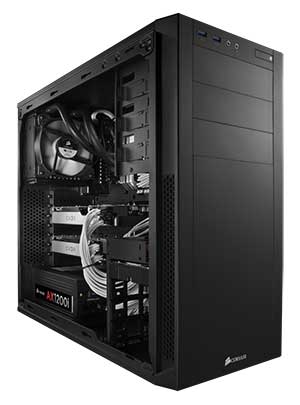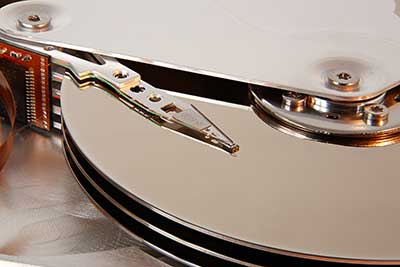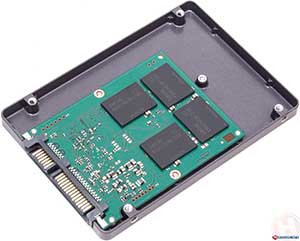Basics of Stock Trading Computers Part 1
Welcome to the Orbital Computers blog! In this series of articles, I am going to outline some of the most important topics to consider when purchasing a stock trading computer. I’m going to cover hardware reliability, performance, and suitability for day trading. I’ve tried to condense the info as much as possible, but when we’re dealing with a topic so complex it really requires a more thorough explanation. This will be a series of several posts, so look for updates every week until February 2014. If you have any questions about any of the topics covered in this series, or if you’d like Orbital Computers to build a stock trading computer for you, please feel free to contact us here.
Introduction
When you are considering taking the steps to becoming a full time day trader, there are a handful of factors that you need to carefully weigh. The first and most important consideration is your trading system. For this series of articles, we will assume you already have a solid trading plan in place – one that you’ve back-tested extensively and that you’ve committed to following consistently. Once you have your trading system dialed in to perfection, you can start thinking about how you will actually execute those trades. It is no secret that stock trading places a tremendous burden on computer hardware. Average off-the-shelf brand name PCs really just don’t cut it when it comes to day trading.

The best solution for the serious day trader is to get a comparably serious stock trading computer. This series of articles will highlight some of the most important considerations for a proper stock trading computer. It won’t be a final compendium of all that is stock trading tech, but it will hit on the key aspects of what constitutes a purpose built stock trading computer.
Who needs a purpose built stock trading computer?
If you just dabble in the market by placing a handful of long-term trades once every few weeks, then you probably don’t need a purpose built stock trading computer. That said, if you are a bona fide day trader that’s making several trades every day, or if you rely on trading to make a living, you will definitely benefit from a proper stock trading computer. If you are a scalper that likes to quickly take one or two points of profit per trade, you will benefit significantly from a responsive trading computer. The real neat thing about custom built trading computers is you don’t have to spend a fortune to get a top of the line PC! Most of our trading computers cost less than an Apple iMac and offer vastly superior components. Let’s delve into exactly what you need to look for in a trading PC.
Trading Computer specifications to consider
Reliability.
There is absolutely nothing more important in a stock trading computer than reliability. That comes before everything else including performance, aesthetics, and price. If you can’t rely on your PC to be executing trades the split second you tell it to, the whole trading system falls apart. If you run into a hardware glitch in the middle of a large position, it can cost you serious money in a matter of seconds. When I traded the S&P500 E-mini Futures, I ran a stop limit of 1 point and a profit target of 2 points. If I just traded 2 contracts at a time and I got stopped out because of a computer glitch, I would lose $100 plus commissions over something that could’ve been easily avoided. This factor is in the forefront of our minds when we are designing and building our trading computers and it weighs heavily on us. We understand that if your computer fails in the middle of a trade it can mean money right out of your pocket. So needless to say, reliability is our number one concern, as it should be for anyone who builds a trading computer. Fortunately, the PC component market is absolutely flooded with extremely high quality components at very affordable prices. Over the next several articles in this series, we go down the list of major computer components and highlight exactly what to look for and perhaps more importantly, what to look out for when it comes to choosing the parts that will go into your stock trading computer.

Hard drive – The hard disk drive (abbreviated HDD) is what most modern desktop computers use for long term data/program storage. The HDD is composed of several layers of spinning platters and several read/write heads that magnetically read and write the data to and from those platters. This design is not unlike a record player, with the main difference being that HDDs use magnetic assignment rather than physical grooves to store the data. (And the head doesn’t ever actually touch the platter!) When you tell your computer to access a program, the platters spin up at very high speeds (all the HDDs we offer spin at 7200RPM), the heads then search for the specific sector of data from the platters. Once the heads find the exact sector of data you asked it for, the hard drive sends the data off through the System Memory (RAM) to the Central Processing Unit (CPU) to be processed. If you thought that whole process sounds like it takes a long time, you are correct! In fact, this process is one of the slowest that any computer undertakes, with HDDs averaging about 40-100 Megabytes per second (MB/s) transfer speeds. To try to put that speed into perspective, it would take about 11 minutes to transfer a 50 gigabyte Blu-ray file from one HDD to another. HDDs offer a handful of significant benefits, but the most compelling is their price per gigabyte (GB) of space. Modern high-end HDDs are priced at usually somewhere around 10 cents per GB of space. Most 1 terabyte (1TB = 1000GB) HDDs cost somewhere around $100. That design leads to an excellent option for most regular PC users, i.e. users who install dozens of large programs on their computer, and/or users who store hundreds of gigabytes worth of movies, music, and video games on their computer.Solid State Drive – While the HDD is great for mass storage, there is a far superior option for day traders: the Solid State Drive. Solid State Drives (SSD) are a truly revolutionary development in the PC hardware industry. They use high density NAND flash memory chips, rather than spinning platters, to store data. They boast literally 10 times better read/write speed performance over traditional HDDs. To compare an SSD with a HDD in the 50GB file transfer test we described above, the SSD would be capable of completing the task in a mere 60 seconds! (Compared to 11 minutes with an HDD.) SSDs contain no moving parts which means quieter operation, lower power consumption, lower heat output, less stringent in-case mounting requirements, instantaneous data access times, and best of all massively increased reliability! Because there are no moving parts, when you tell your computer to open up a program, the SSD immediately responds. There is virtually no lag time because SSDs don’t have to spin up platters, search for the data, then respond with it. They simply utilize an on-board memory controller that access the data and responds with it within split seconds. I can’t overstate how significant this is for a stock trader. The market works on a first come, first served basis. If you can get a few seconds advantage over the competition, your chances of success just go that much higher. Additionally, because there are no moving parts, there are inherently less opportunities for mechanical failure.

There is one glaring drawback to SSDs: they are expensive on a dollar per gigabyte basis. Where you can get a 1000GB HDD for $100, you will only get about 120GB of space for the same price with a Solid State Drive. This is where the nature of stock trading computers comes into play in your favor. Most stock traders don’t load up their purpose built day trading PC with hundreds of gigabytes of non-essential data like volumes of Blu-ray movies or dozens of video games. Instead, traders install a handful of important applications such as their Operating System, trading platform, charting package, a selection of indicators, a web browser, and perhaps a few other odds and ends like Microsoft Office and accounting software. All these programs, in total, usually consume far under 30-40 gigabytes of space. That means that you can fit all your important trading related programs and data into a speedy and reliable SSD, while putting all non-trading essential data onto a more spacious HDD. (You can run a large combination of SSDs and HDDs in your trading computer without any difficulties at all, we can help you decide what is lowest price option for your unique needs!)
